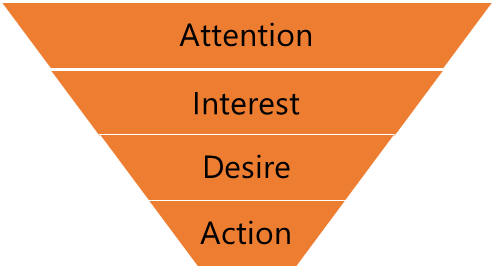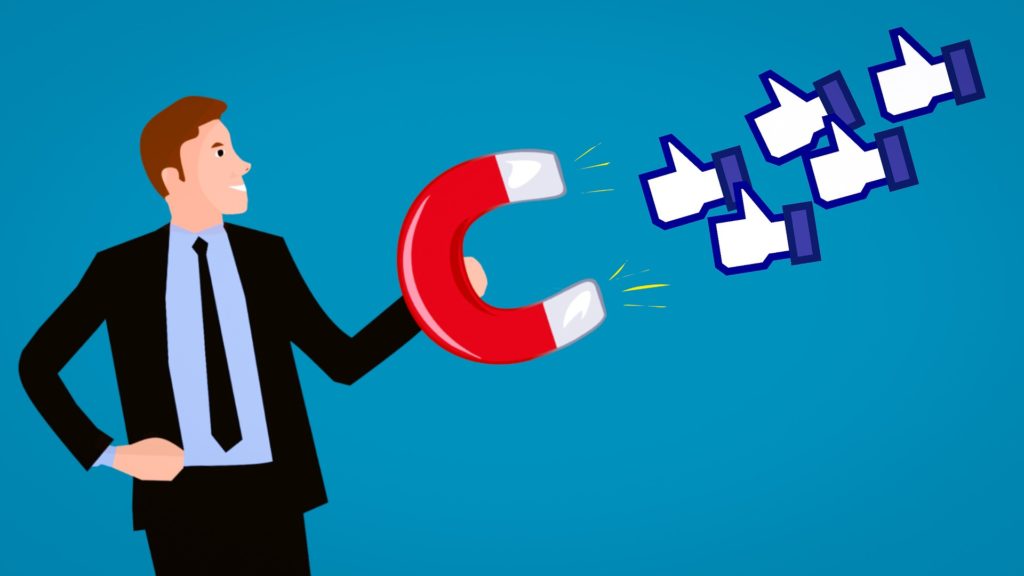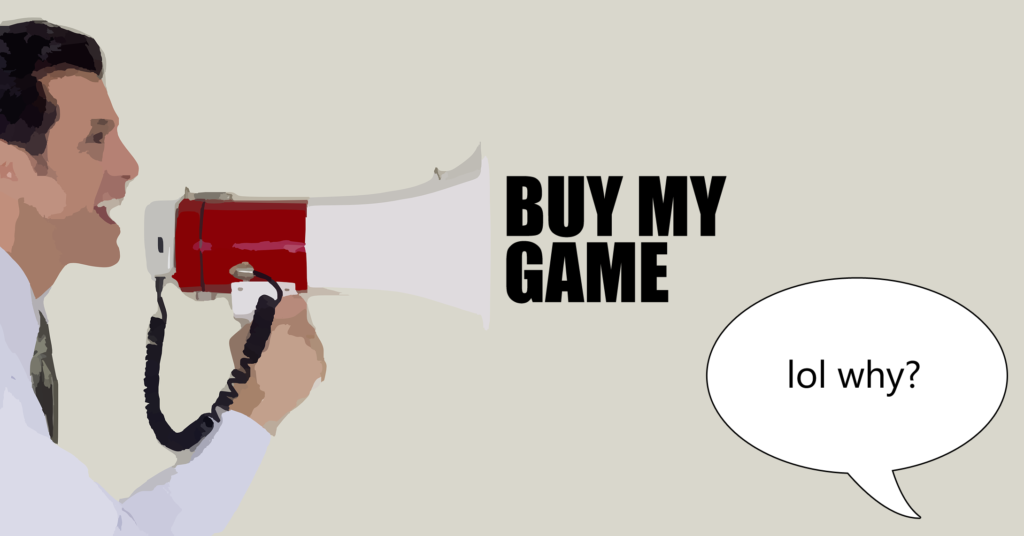Welcome to the third unit of Start to Finish: Publish and Sell Your First Board Game. First came Game Development 101 and then came Designing & Developing Your Game. I’ve been slowly unfurling this long, long, long series of blog posts with wonderful collaborators and I have had an absolutely wonderful time. That’s why I’m especially excited to introduce you to unit 3: Marketing & Promoting Your Game. This is the first post of fifteen, maybe a little more if I find myself extra inspired between now and July.

Need help on your board game?
Looking for more resources to help you on your board game design journey?
Marketing is a tricky beast. At its root, marketing is all about finding, keeping, and pleasing customers. This is simple to explain, maybe even obvious. Yet beneath the surface, you have a business function and area of study that is rife with different methods and schools of thought, many of which contradict each other. To make matters harder, marketing is not something you can track super easily. There has been great progress in the world of business that has turned marketing from an art to a science, but there is still an element of ambiguity that will never be nailed down quite like accounting, product development, quality assurance, finance, or even management.
For the sake of this guide, I’m going to assume you are a board game developer with intentions to self-publish. I’m also going to assume you don’t have an audience yet and that you have no formal training in business or marketing. Even if some of these assumptions don’t apply to you, my use of these assumptions will keep complicated material simple and approachable for you.
This guide comes in 11 parts. The parts with asterisks beside them draw heavily from A Crash Course in Board Gaming, so you can skip them if you’ve read that article already.
- Common Marketing Strategies
- Don’t Focus on Methods, Focus on Fundamentals
- The Basics of Marketing *
- Audience *
- Product *
- Branding
- Gaining Attention
- Building Interest
- Creating Desire
- Using Calls to Action
- Bringing it All Together
Common Marketing Strategies
No matter what marketing strategy you choose, certain aspects of marketing remain roughly the same. You want to create a product or service that appeals to a certain audience. Over time, you build up a brand, both for your company and your individual products and services. To generate sales, you’ll need to gain the attention of your target audience and take them through all the steps of purchasing it.
Some common marketing strategies include paid advertising, relationship marketing (customer loyalty), undercover/stealth marketing, cause marketing, word-of-mouth, and internet marketing. They are all pretty much what they sound like. You can use niche marketing for small, odd little audiences with unique needs and you can use diversity marketing to cover a lot of different bases at once.
Don’t Focus on Methods, Focus on Fundamentals
As you can tell from above, there are a lot of different types of marketing strategies. To list them exhaustively would be both exhausting and not particularly useful. I could even explain what all the common marketing strategies above are about, but that’s not really the best use of our time.
I want you not to understand individual strategies, but the ideas behind them. That’s why I’ll be talking about your product, branding, getting people to care, and sales funnels later on. I’m going to go into a little more depth than I did with A Crash Course in Board Game Marketing & Promotion, this time covering lead generation, community building, and calls to action in more depth.
While I will be providing examples of methods, I’m not going to tell you what to do. You need to understand the fundamentals, take a cue from my examples, and try an experiment on your own. What works for me might not work for you, so you need to learn to tweak your approach like a scientist.
The Basics of Marketing
At the root of any good marketing strategy, you have to understand two things. First, you need to know who your target audience is, what they’re interested in, and how they behave. Second, you need to understand how to make them buy your games. I’ll cover audience in a moment, but first I’d like to reintroduce you to the idea of the AIDA model and how it can help you build a sales funnel. I’ve mentioned this before in How to Get Big on Twitter as a Board Game Dev and A Crash Course in Board Game Marketing & Promotion. I’m lifting this straight from my prior Crash Course article – it bears repeating because this model is that important to understand.

AIDA stands for Attention, Interest, Desire, and Action. When you’re a marketer, the first thing you need to do is get people to know you exist – attention. Then you have to make people care about your game – interest. If they start to want your game, that’s a good sign – desire. Next, they get on your website or Amazon with intention to buy – action. Marketing is a slow dance. You have to very slowly build your reputation.
The idea here is that marketing is not just about getting attention and targeting your audience well. No, it’s about convincing people to buy your game and to talk about. This is a multi-step process and you need to understand that. You cannot simply shout about your game into the void of Twitter and pray for the best. You need to create a “sales funnel.”
Here is an example of a sales funnel:
- Use social media like Twitter, Facebook, and Instagram to “generate leads” or garner Attention.
- Ask people individually if they’d like to sign up for your newsletter. If they say yes, that’s Interest.
- Use your newsletter effectively to create Desire.
- Once you’ve created desire, ask them to take Action, like backing your Kickstarter.
Audience
For your sales funnel to be useful, you need to create one and apply it to your target audience. Here is another section I’ve lifted from the original Crash Course to explain why your target audience is so important.

There is no perfect product. There is no perfect audience. When it comes to marketing, there is no way to make something that is objectively the best in all situations. Because value is so subjective, what you need to focus on is making the perfect product for a very specific audience.
In board gaming, there are lots of little communities. Remember, the board game community is not a monolithic singular entity, but rather a whole bunch of different mini-communities with interests that roughly line up. For example, I’ll never get people to play Twilight Struggle with me at a party, but Codenames…now we’re talking. All the considerations that go into making a game – length, weight, price, art style, gameplay, packaging, and so on – needs to be tailored for a very specific audience. Alternatively, you can make whatever you want and just find the perfect audience later. Both approaches work and have different pros and cons.
The goal of marketing, especially when you’re small and just getting started, is not to broadcast your message. Until you have a big media presence, you can’t really use “the hype machine” to your advantage. You just don’t have the power to do that. You can, however, target a very particular audience – this is the best use of your limited resources and it’s much more effective. Don’t broadcast. Narrowcast instead.
Product
Now I’m going to lift one last section from my original Crash Course to talk about how your product fits into your marketing strategy.
If you look on Board Game Geek, you’ll find that there are so many types of games out there. It’ll make your head spin. You want to know exactly what sort of game you’re making so that you can select the ideal target market and tweak around them. If you can’t describe your game, you’re in deep marketing trouble.
I suggest you look on Board Game Geek to find similar games to yours. There will always be similar games. Know how to make comparisons of your game to other games. Highways & Byways, for example, is a racing game with a board that looks like Ticket to Ride crossed with a highway map.
Know how to describe mechanics that are in your game and see who it appeals to. Some people dislike “take that” mechanics because they’re too mean-spirited, such as the well-regarded reviewer, Rahdo. It’s no use selling a game with “take that” mechanics to him, then, is it? Likewise, some people really, really love “take that” mechanics and they’re the ones I sell War Co. to.
Know exactly who you’re trying to appeal to. This determines your target audience. Your target audience will differ with each game.
Branding

Branding is a nebulous concept that makes people think of logos and company names. That’s all important, but to focus on that would be to miss the forest for the trees. A brand is pretty much anything – a product, a company, a person – that has a consistent message to share with a defined audience. To build your brand, pick something you want people to see and make sure that it’s visible. You want people to associate your brand with your messages. For me, I like the personal touch and I like being involved in my business hands-on. That means I, Brandon Rollins – the actual physical person sitting in Tennessee, act as a brand within my larger company of Pangea Games.
Once you decide what brand you want to push and the messages you want to send, you need to use consistent messaging so people will associate your messages with your brand. That could mean a logo, a color scheme, and name and a lot else. Coca-Cola’s brand is the ornate calligraphy of their name and the red, white, and black colors. My brand, at least as far as this blog is concerned, is to put my face as many places as is appropriate, use a lot of blue and white, and to always speak to the board game developer with 0-2 years of experience.
You’ll have to experiment with your branding until you find what works. It won’t come immediately. Try different names, color schemes, and even target audiences. Zig-zag until you find out what resonates with people you want to reach out to.
Gaining Attention
The first step of any working marketing strategy is to draw attention. The ways you can go about gaining people’s attention are myriad, but I’ll cover a few here. The process of drawing attention to your product or your company is called lead generation and it’s simultaneously one of the most important and most opaque parts of any marketing strategy.
There are a lot of ways you can generate leads. Here is a short list just to get your imagination going:
- Social media such as Facebook, Twitter, or Instagram
- Game reviews
- Content creation (blogs, podcasts, etc.) – more details on that next week
- Using Kickstarter to launch smaller projects
- Advertising
- Community building
The common thread in all forms of lead generation is that you find a place where people gather and you talk to them about what you’re making or selling. You need to be systematic, organized, and consistent. Your time and money is limited, so you only want to spend it on people who are highly likely to like what you’ve got – your target market. Furthermore, anything you do needs to be consistent with your brand.

There is no perfect method and I’m still refining my own forms of lead generation. Every business will need a different method. Here are some that I’ve used in the past.
I’ve used services such as ScoutZen to export the follower lists of people similar to me on Twitter and Instagram. I get the followers in a spreadsheet and I follow a couple dozen on each account every morning. I do this all by hand, manually reviewing accounts so I don’t bother inactive people, people outside my market, and spam accounts. If you try to automate this, you might run into trouble with the automation rules of those sites. This method tends to earn me 200-300 qualified leads every week, though your results may vary. These are people who have a good chance of getting added to my Highways & Byways email list or to the Discord server.
This blog also generates leads. I used to have to push it really hard on social media, but after a while, Brandon the Game Dev posts started showing up on Google and, when I’m really lucky, Reddit. Those sites bring people to me, and some of them get on my mailing list or in my Discord server. It took months for this site to start generating its own leads, but it’s finally gotten there 🙂
Every time a reviewer reviews my game or I do a guest post on a blog, interview, Twitch stream, or podcast, I always make sure to push people to one page I really want them to go to. That’s a landing page. I’ve used the Highways & Byways Kickstarter page lately, which is a mailing list that will alert people when the campaign is live. The reviews, blogs, interviews, and so on – those are all lead generation methods.
I’ve used small amounts of advertising to push the posts on this blog and to get people to pay attention to Highways & Byways. Facebook ads are a particularly effective form of lead generation. Giveaway contests, in particular, have been extremely effective on the Highways & Byways Facebook page. To learn more, please read Jamey Stegmaier’s Beginner’s Guide to Facebook Ads. Fantastic resource, so you’ll learn from the best!
Building Interest
It’s not enough to just draw attention, though. You need to work your leads list. That involves making sure they understand what your game or your company are about and making them interested. A lot of your leads won’t be so good, so they’ll drop off at this point. Still, there are a number of ways to gain people’s interest.
You can post pictures of your product, give people behind-the-scenes slices of life on social media, and create useful guides for other creators on a blog. You can even send everybody a custom message and ask them if they’d like to sign up for your mailing list. I’ve done a mix of all four of these and have found them to work out.
There are a lot of examples I can give you here, but most of them go back to smart branding. There are three really big ones that I use that I’d like to share.
The first one is so simple: send people direct messages on social media. I build a lot of my leads on social media. Every Friday, I send all my new followers messages by hand to see if they’d like to join Discord or the Highways & Byways mailer. I usually get a 10-15% conversion rate, whereas automated messages tend to be a lot lower. I read profiles and customize my messages a little for everybody. Yes, I use boilerplate messages which I tend to copy and paste, but I customize them as much as possible based on what I see.
The second is build landing pages. Landing pages are special pages on your website intended to briefly describe what you’re doing and give people a way to provide their name, email, or other personal information. Landing pages are a great place to send people after you get their attention and the seamlessly bridge the gap from attention to desire. Here is an example of a landing page I used for a Highways & Byways contest. Feel free to steal my layout and copy most of my text.
Speaking of giveaway contests, that’s my third method of generating interest is running a giveaway contest. Yes, I know this overlaps with something I mentioned for gaining attention. The beauty of giveaway contests on Facebook is that they often do both at the same time. Pick a good prize, come up with a good target audience, and take out a little bit of money in ads. I tell people “in order to win, you have to sign up on this landing page, share the post, like the post, and like the page.” Doing these four things gets me enormous ROI on my Facebook ads. It doesn’t even take much to get people to take action either – you can use a $25 Amazon gift card or a copy of a light game like Sushi Go.
Creating Desire
Once you make people interested, you need to make them care. There are few ways to make people care, but there are two that I can easily measure: mailing lists and communities. The size of your mailing list or community is a good proxy for the level of desire for your product or company, because nobody joins a community if they don’t care. For that matter, nobody gives out their personal email address if they don’t care.
Mailing lists are considered one of the most powerful forms of marketing. It’s also pretty accessible. You can use Mailchimp to set up a mailing list in about 20 minutes. They’ll help you create a landing page and they’ve got templates for when you want to send out emails. Once you figure out how to gain attention and interest, you can continue gathering emails and stay in touch with people who are interested. What you decide to share in your emails will hopefully help others care more about your product, and they may act as a call to action (which I’ll cover in a little bit). I built mine up through the lead generation and interest building ways listed above. If you want to see an example of a newsletter being used, you can always sign up for mine 😉
Communities work in the same way. Communities can be Facebook groups, chat rooms, forums, as well as physical offline clubs or organizations, too. Having an open line of communication with people who are interested in your product or company is really useful because that’s what you can use to get people to take action later. Once you start to build a community, establish a few ground rules, get a few close members and establish social norms. Once you do that, communities can practically run on autopilot within a year.
You’ll see a common thread here. The “Desire” step of the AIDA model is intended to create a holding ground for people who have already paid attention and shown interest. You need an open line of communication with those people, and the ways above will help you do that.
Using Calls to Action
Once you’ve spent all this time getting people’s attention, piquing their interest, and stoking their desire, it’s now when you can move forward and get what you wanted along. A call to action, in marketing speak, is pretty much anything that requests people buy your product, get on your mailing list, or do anything else that you want them to do. A call to action can involve a direct message, a well-placed button on your website, a link in an email, or even a Kickstarter campaign. Yes, Kickstarter campaigns are essentially just one giant call to action. That’s their real value – otherwise, you’re just doing a regular product launch.

How you will call people to action depends upon the tools you’re using to gain attention, build interest, and so on. However, the basics are simple: be very clear about what you want, ask directly, and make sure your customer is truly in your target audience. You’ll want to tweak until you get your calls to action just right.
Some calls to action I use include:
- Any time I use the Highways & Byways Kickstarter landing page link and say “click here to get an email when the campaign is live.”
- Direct messages where I ask people to back my campaign or join my Discord server.
- The bright orange button in the middle of my blog’s home page that pushes the Discord server.
Bringing it All Together
I’ve covered a lot of ground today, so I’d like to tie it all together and help you actually choose a marketing strategy that works. Instead of a normal concluding paragraph, I’d like to leave you with a checklist of things you can do to make a marketing strategy that works. I want you to have specific to-do’s.
- Figure out exactly who you want to sell to. Know your audience inside and out. Imagine them as individuals and be able to describe their personalities.
- Create a product that is perfectly suited for that audience.
- Create a clear brand that speaks to the personalities and needs of your audience.
- Test all of the above in any way you can. Ask others for feedback. Use Facebook ads and see what gets the most likes. Take no assumptions for granted.
- Come up with three ways to generate leads. You can use my examples from above. Try a different one each week. Drop the least effective method, do the most effective one more, and keep doing the second-best one for a little while just so you don’t overspecialize.
- Make a list of all your leads. Think of a way to reach out to each of them and generate interest (if that’s not build into your lead generation process from the beginning).
- Create either a mailing list or a community for people to join once they’re paying attention and interested.
- Try different calls to action based on my examples above. Only keep the ones that work and use them consistently.
- As much as you can, track data on all of this. Listen to the data and change your processes so that you’re doing more of what gets you attention, interest, desire, and sales.





8 thoughts on “How to Choose & Use a Board Game Marketing Strategy that Works”
Brandon;
I have really injoyed all of your game board tips. I have a new football game
Board that is unique Simple – Fast – Fun similar to paper football except using
any coin. I have only been starting to market it for about a month. I produce
this game myself and people seam to like a lot, but don’t jump to buy. I guess
I need more help. I am starting you use your tips which I really like. Thanks for
all the good information.
(.)(.)
DUKE SR
This series is so tremendously helpful, thank you for writing them Brandon! I’m in charge of marketing for a board game company that my friends and I have started and this has given me a lot of direction (I even signed up for your newsletter for a good example 😉 ). The one thing that I’m trouble with is the fact that my team is 6 people and it’s difficult for us to do the same kind of one-on-one personal connection that you talk a lot about. It’s important to us that people feel as though they can talk to any of us, but that idea is a lot more difficult to establish when the only way to find some of us is on our website. I was wondering if you had any suggestions about that/if you think that we’d just have to take a different approach & focus on highlighting the full group more often. Thanks in advance!